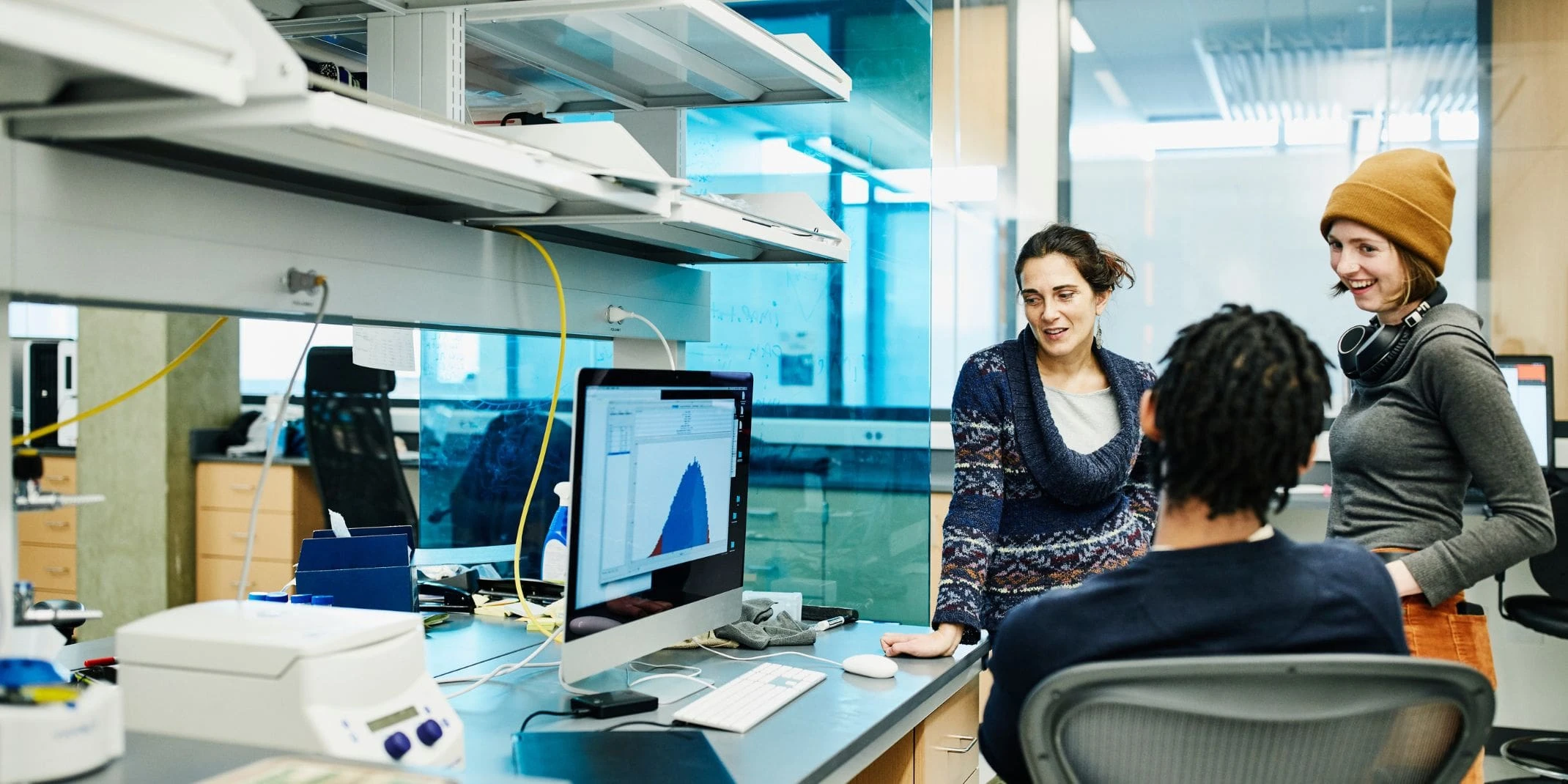Behind the scenes: How user feedback is shaping ScienceDirect AI
July 17, 2025 | 13 min read
By Georgiana Svensmark-Baciu

Learn how user insights are powering the development of ScienceDirect AI to make research faster and more effective.
The use of AI is growing rapidly, and nearly 95% of researchers think AI will help accelerate knowledge discovery. Yet the question of how generative AI can best be used to support research is still on the table. When the idea of building an AI tool over the largest corpus of high-quality, full-text, peer-reviewed research out there came up, the ScienceDirect AI team had one thing in mind: they needed to prioritize user feedback. Their goal was to deliver an expert tool that is fit for purpose, making research more efficient and rewarding. This meant working with users to develop an experience that can:
Summarize insights from books and journals
Compare methods, results, and more across different papers, experiment by experiment
Help rewrite prompts for better results, with full transparency on how this is done
Surface the original paragraph that every AI claim is based on
So what did that look like in practice?
For Felisa van Hasselt, Senior Product Manager, ScienceDirect AI was the answer she had been waiting for to help researchers go further, faster.
“We kept hearing from users that it’s super important to have insight into the exact methods used in every experiment — to learn from them and potentially replicate them,” Felisa said. “The use case kept coming up again and again, but we didn’t have the technology to make it happen. And then, GenAI came along.”

Felisa van Hasselt, Elsevier Senior Product Manager, GenAI
Felisa has been part of the ScienceDirect product team for 13 years. Before that, she was a researcher. She earned a Ph.D. in neuroscience but decided a career in academia was not for her.
“It takes a certain kind of love for competition to be an academic,” she said. “I had colleagues taking papers with them to the beach on holiday. I could never do that.” As a senior product manager, she now leads the process of building products for researchers — tools she wishes she had when she was in their shoes.
“It’s just so hard to get to the information you need. It takes so much time,” Felisa said.
“Everything I’ve done within Elsevier is trying to get past that and help researchers spend less time sifting through papers to find what they need. But building something truly useful is not easy.”
It’s not easy indeed. More than 100 technologists and product experts worked tirelessly for over 18 months to bring ScienceDirect AI to life. Even with the right brains at the table, one more key ingredient is needed to make something that truly makes a difference: user input.
“Let me check — I keep a record of it. It’s 130,” said Beste Karapirinler, senior UX researcher. “For ScienceDirect AI alone, we ran 130 one-on-one interviews. That’s 130 hours spent directly with users. Then I have to analyze them, read between the lines to figure out what they’re telling us, put it into context, and share the insights with the team. And this is on top of surveys and in-product feedback, of course.”
Beste also briefly worked in academia after university but preferred a career where she could have a more immediate, tangible impact. She now spends her days learning from users and making sure those learnings are put to good use. Users are recruited through in-product pop-up messages shown to randomly selected users, so a variety of people are consulted — from marine biologists in the United States to anthropologists in Ghana, to librarians in academic and corporate organizations.

Beste, Elsevier Senior UX Researcher
Our product team spent years building an understanding of what researchers do, asking them countless questions about how they search for information, what they struggle with most, and what they want to see changed — even before giving them a product or new feature to try.
“Every single new feature can be traced back to a need users expressed,” Felisa said. “We always get their feedback before releasing anything, meaning we change course if it’s not what they would truly benefit from.” Felisa and Beste work closely with the rest of the product team to ensure what they build is fit for purpose.
For example, Beste recalled an early prototype of ScienceDirect AI being tested with researchers. She noticed they struggled and took quite a bit of time writing the right prompt. It did not come naturally to them since they were used to keyword searches on traditional tools.
“It was hard for them to formulate it,” she said. “They weren’t sure how long or short it should be, how general or specialized. There were also typos in their queries, and typos are sometimes misunderstood by AI. We needed to figure out how to help users formulate their queries and how to better understand the queries to generate an output aligned with their needs.”
Beste brought these concerns to the ScienceDirect team. They added a feature to ScienceDirect AI that corrects typos and rewrites queries in different ways to capture multiple possible interpretations and provide the best possible response. It even shows this entire process to the researcher in real time, so they know their query has been adjusted.
“Users were very happy with this development,” Beste said. “We saw better response ratings and higher user satisfaction.”
Many other features, such as Compare Publications and a side panel tracing AI-generated claims to specific passages in the full text, came from user feedback. More than 30,000 people in 70+ institutions and R&D-intensive companies around the world tested ScienceDirect AI before its release, but the work didn’t stop on launch day. The team works tirelessly to improve the product every day.
While getting researcher input is time-consuming and expensive, Felisa believes there is no better way to build a product that can make a real difference for researchers.
“We meet every week to discuss user feedback,” she said. “We even have a chat channel where we see feedback live as it comes in, so we can redirect anything urgent to the right team immediately. We go through cycles of analyzing data, brainstorming solutions, testing, and adjusting. It’s also how we prioritize. If we get lots of feedback on a particular issue, it moves higher on the priority list. For example, right now many people are requesting more references in the summary response, so that’s moved up on the roadmap.”
Want to see the fruit of their work for yourself? Explore ScienceDirect AI.
Inspired by what you’ve heard, and want to join us? Check out job openings at Elsevier.